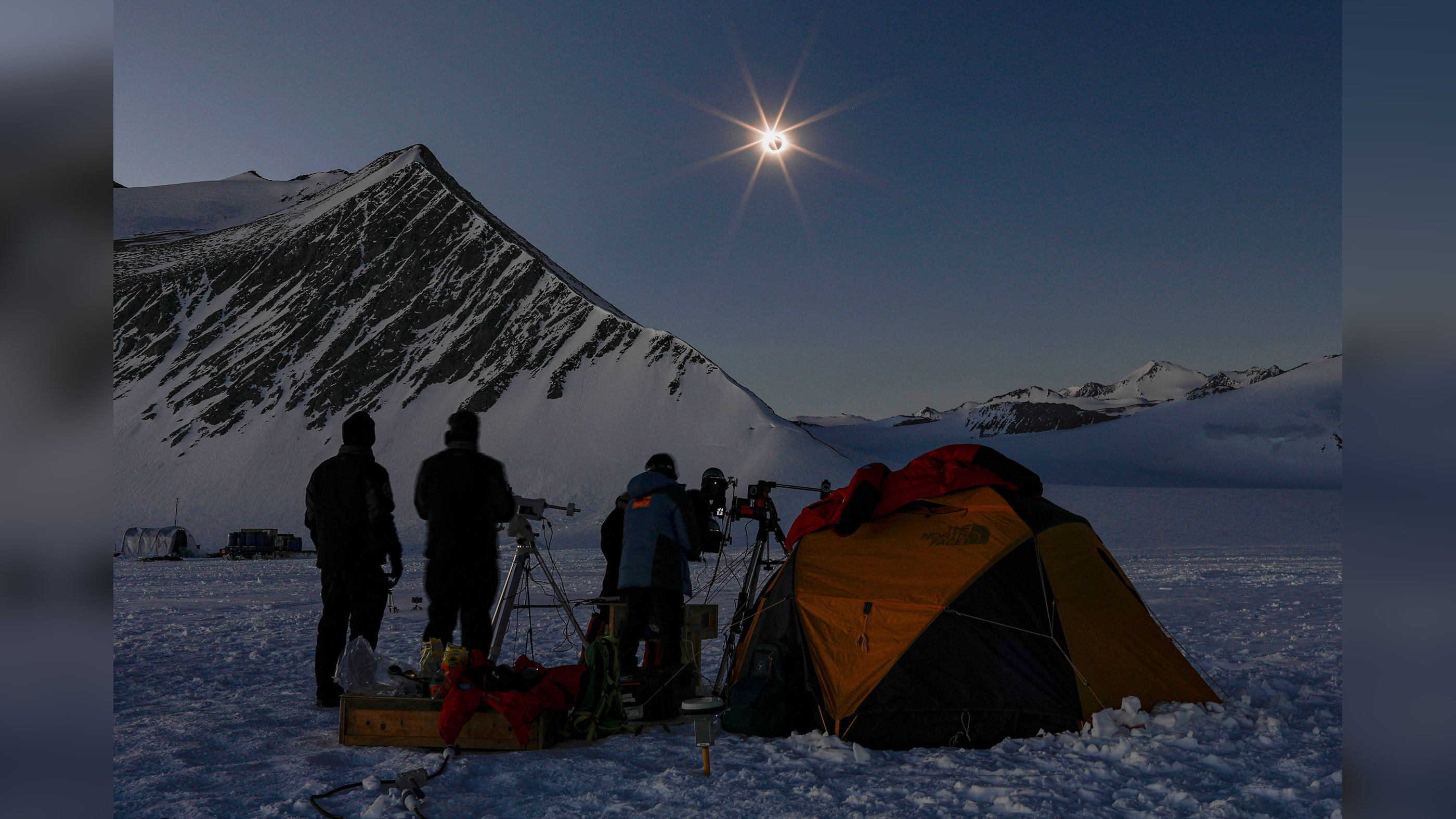Rare total solar eclipse over Antarctica dazzles ... the penguins
Did any of the southern continent's waddling birds look up to catch the sky show?

Anyone in Antarctica today would have experienced the only total solar eclipse of the year, suggesting one of the largest groups of individuals to observe the gorgeous show would have been the southern continent's penguins. And that's a huge population of spectators.
During a solar eclipse, the moon moves between the sun and Earth so that it projects a shadow onto Earth. Today's total solar eclipse happened when the sun, moon and Earth, in that order, were lined up perfectly. That happened at around 2:44 a.m. EST (0744 GMT), according to NASA. Totality — when the umbra or the darkest part of the moon's shadow covers the face of Earth — lasted just 1 minute and 54 seconds at most.
People (or animals) who got to see the solar eclipse (through special glasses, as you should never look directly at the sun) were located in the center of the moon's shadow at the time it hit Earth, according to NASA. And for those individuals, as the moon's shadow crept across our planet, the sky turned dark. If you were lucky enough to be in the path of the total solar eclipse, you would have seen (through solar-eclipse glasses) the sun's outer atmosphere called the corona. (On typical days, this outer atmosphere is outshined by the face of the sun, NASA said.)

Right now, Antarctica is experiencing its summer (which lasts from about October to February), when the sun is nearly always in the sky. That means up to an estimated 4,400 to 5,500 humans could have been on and around the continent as researchers and personnel staff, according to an estimated summer population by the World Population Review. That might sound like quite a few humans on Earth's coldest continent, but they are far outnumbered by the waddling birds that live on the bottom of the world. An estimated 20 million breeding pairs of penguins call Antarctica home, according to the British Antarctic Survey.
Luckily, the penguins are equipped for skywatching at any time of the year in their chilly home, which during the winter can plunge to average temperatures of between about 14 degrees Fahrenheit on the coast to minus 76 F at the highest points in the continent's interior (minus 10 to minus 60 degrees Celsius), according to the Australian Antarctic Program, part of the government's Department of Agriculture, Water and the Environment.
Though people outside of Antarctica didn't get to see the total solar eclipse, some were treated to a partial eclipse, which occurs when the sun, moon and Earth (in that order) are not directly lined up. NASA said the partial solar eclipse, weather permitting, was observable from: parts of Saint Helena, Namibia, Lesotho, South Africa, South Georgia and Sandwich Islands, Crozet Islands, Falkland Islands, Chile, New Zealand and Australia.
Originally published on Live Science.
Sign up for the Live Science daily newsletter now
Get the world’s most fascinating discoveries delivered straight to your inbox.
Jeanna Bryner is managing editor of Scientific American. Previously she was editor in chief of Live Science and, prior to that, an editor at Scholastic's Science World magazine. Bryner has an English degree from Salisbury University, a master's degree in biogeochemistry and environmental sciences from the University of Maryland and a graduate science journalism degree from New York University. She has worked as a biologist in Florida, where she monitored wetlands and did field surveys for endangered species, including the gorgeous Florida Scrub Jay. She also received an ocean sciences journalism fellowship from the Woods Hole Oceanographic Institution. She is a firm believer that science is for everyone and that just about everything can be viewed through the lens of science.










